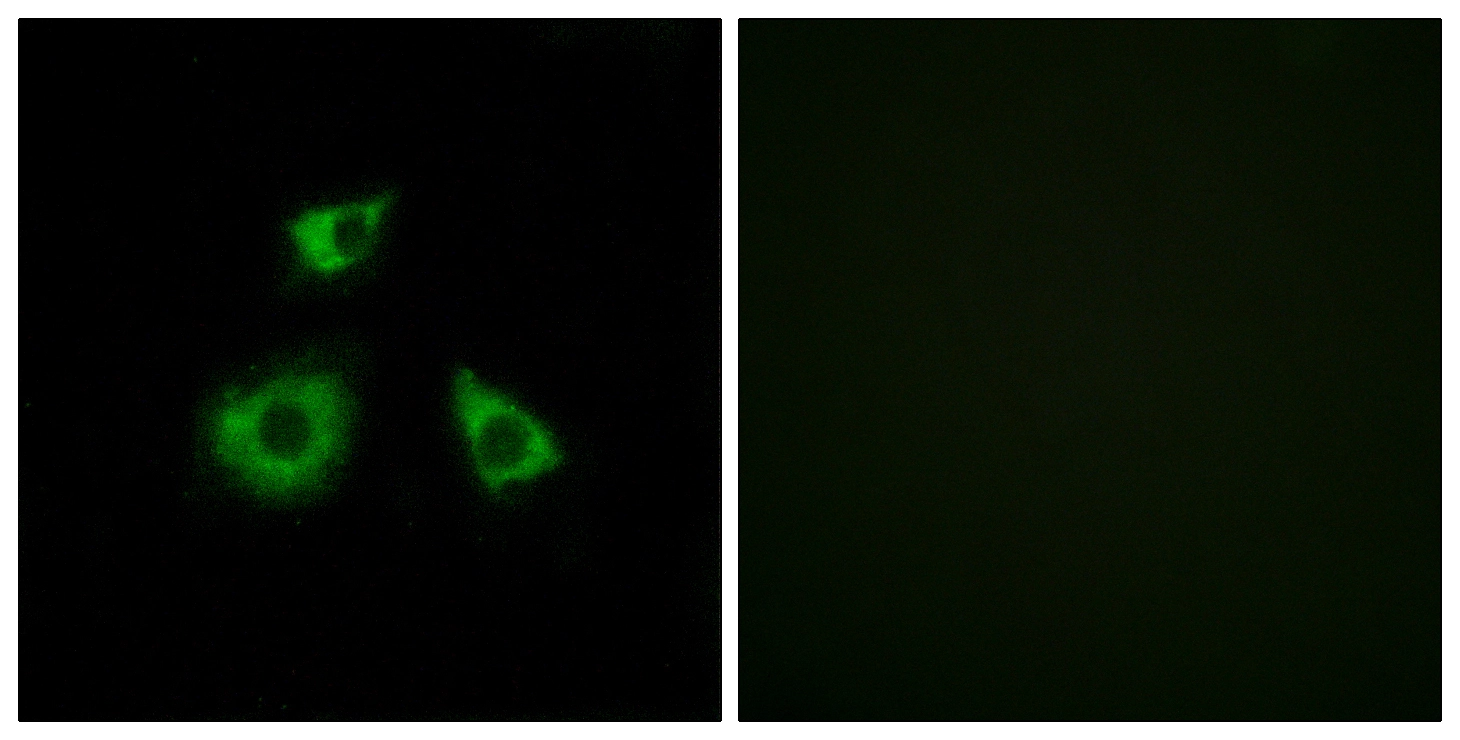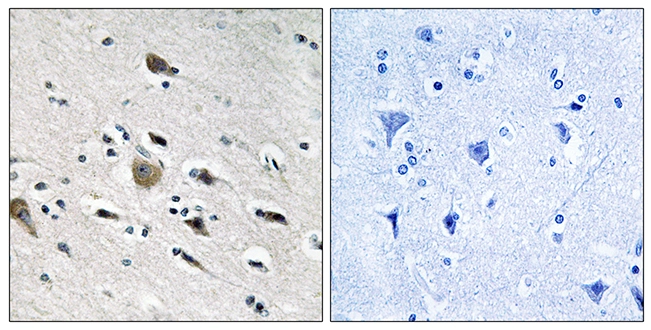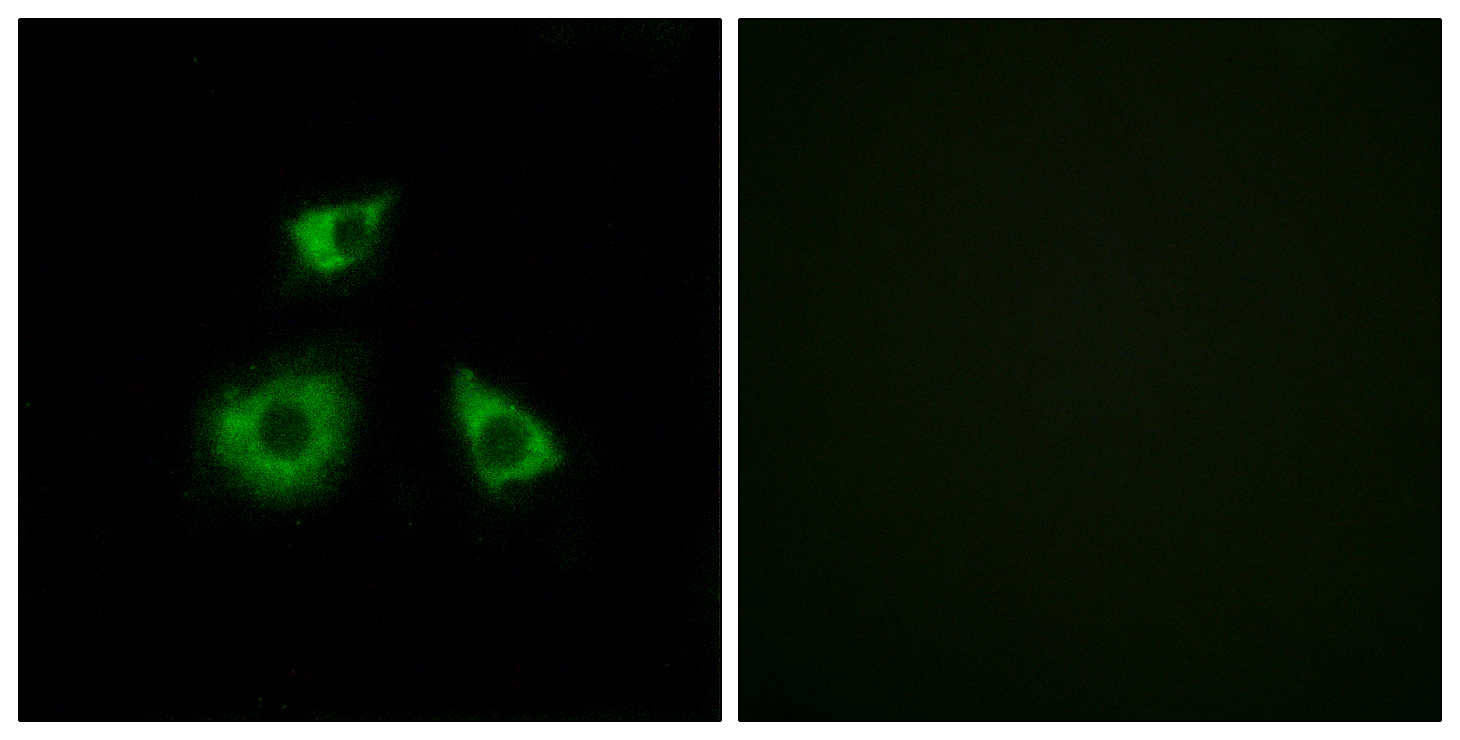
ICC/IF analysis of HUVEC cells using GTX87484 MRPL52 antibody. The picture on the right is blocked with the synthesized peptide.
MRPL52 antibody
GTX87484
ApplicationsImmunoFluorescence, ImmunoCytoChemistry, ImmunoHistoChemistry, ImmunoHistoChemistry Paraffin
Product group Antibodies
TargetMRPL52
Overview
- SupplierGeneTex
- Product NameMRPL52 antibody
- Delivery Days Customer9
- Application Supplier NoteICC/IF: 1:100~1:500. IHC-P: 1:50~1:100. *Optimal dilutions/concentrations should be determined by the researcher.Not tested in other applications.
- ApplicationsImmunoFluorescence, ImmunoCytoChemistry, ImmunoHistoChemistry, ImmunoHistoChemistry Paraffin
- CertificationResearch Use Only
- ClonalityPolyclonal
- ConjugateUnconjugated
- Gene ID122704
- Target nameMRPL52
- Target descriptionmitochondrial ribosomal protein L52
- Target synonymsmL52, large ribosomal subunit protein mL52, 39S ribosomal protein L52, mitochondrial, L52mt, MRP-L52, mitochondrial large ribosomal subunit protein mL52
- HostRabbit
- IsotypeIgG
- Protein IDQ86TS9
- Protein NameLarge ribosomal subunit protein mL52
- Scientific DescriptionMammalian mitochondrial ribosomal proteins are encoded by nuclear genes and help in protein synthesis within the mitochondrion. Mitochondrial ribosomes (mitoribosomes) consist of a small 28S subunit and a large 39S subunit. They have an estimated 75% protein to rRNA composition compared to prokaryotic ribosomes, where this ratio is reversed. Another difference between mammalian mitoribosomes and prokaryotic ribosomes is that the latter contain a 5S rRNA. Among different species, the proteins comprising the mitoribosome differ greatly in sequence, and sometimes in biochemical properties, which prevents easy recognition by sequence homology. This gene encodes a 39S subunit protein which has no bacterial homolog. Multiple transcript variants encoding different protein isoforms were identified through sequence analysis. [provided by RefSeq, Jul 2008]
- Storage Instruction-20°C or -80°C,2°C to 8°C
- UNSPSC12352203





